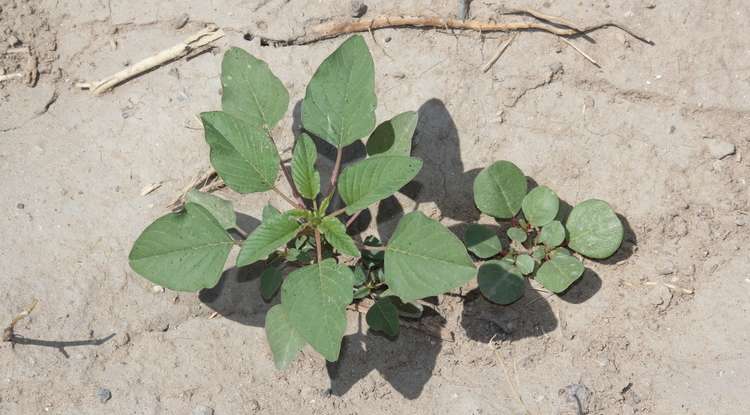Reasons are plentiful for whacking those weeds

Summer rains have arrived in southern Arizona, encouraging gardens to grow—and weeds to spring up across the landscape.
"All low-lying areas and drainage areas turn green with Johnsongrass and Palmer amaranth and many other weeds in central and southern Arizona. Our summer annual and perennial grass weeds become much more prevalent, and the edges of Interstates 10 and 8 become much greener," says Bill McCloskey, a University of Arizona Cooperative Extension weed specialist.
The Arizona monsoon officially began June 15 and it will end Sept. 30, with storms peaking between mid-July and mid-August and bringing some dramatic landscape changes.
"My role is first and foremost as an educator," McCloskey says. "It's about disseminating weed science knowledge so that people take a holistic approach to weed management—so they don't just go out and rely on chemicals."
But why whack weeds? Aren't they providing more greenery in a harmless way?
Not necessarily, according to McCloskey, who says there are three environments he addresses regarding weeds: wildland, landscape and agricultural.
Wildland: Ecology and Fire Danger
There is an ecological concern for controlling weeds—or "invasives"—such as buffelgrass in wildland areas, McCloskey says.
McCloskey, the only weed science faculty member at the UA, has done much work on buffelgrass control in Saguaro National Park and Coronado National Forest in Arizona.
Buffelgrass, in particular, builds up fuel and outcompetes native vegetation for water and nutrients.
"And then you get a fire that burns through and kills all the cacti and succulents—and they won't come back," McCloskey says. "What comes back is even thicker buffelgrass. So, potentially, it could convert the upper Sonoran desert vegetation that we know and love to a mesquite savannah grassland, devoid of saguaros, cacti, cholla and ocotillo. It would be a very different landscape."
Landscape: Neighborhood Weeds and Pests
For a homeowner or gardener, the issue of weeds in a landscape setting is mainly aesthetic. Weeds compete with desired vegetation, according to McCloskey.
"A weed is a weed in the eye of the beholder," he says. "So you can make the decision about what you like and don't like. Oftentimes, neighbors don't see eye-to-eye. So, for example, I don't want any fountaingrass in my yard, but some people do in my neighborhood."
Having a lot of weeds also provides more of a habitat for pests, such as pack rats.
"I try to address the issue at a more basic level than just being reactionary, and saying, 'Oh, wow, I've got weed X. What do I spray, Bill?'" McCloskey says.
"The idea is to be thinking about it long before that point. Don't let weeds go to seed in the first place. Get rid of them before they produce flowers."
Agricultural: Crop Invasion
In an agricultural setting, if left unchecked, weeds can outcompete virtually all annual crops and could reduce yield by up to 90 percent, McCloskey says.
He looks at both chemical and mechanical solutions, such as precision cultivation—machines that use technology to specifically identify and remove or slice weeds. He spends time demonstrating to farmers how to set up and use cultivators and other in-row weeding tools.
"The problem with being reactionary, and just using chemicals and spraying when you suddenly have a huge problem, is that it leads to problems like herbicide-resistant weeds," McCloskey says, adding that his goal is to educate people on the population dynamics of weeds and to look at the underlying ecology of a system.
Provided by University of Arizona


















